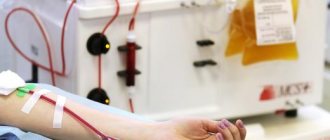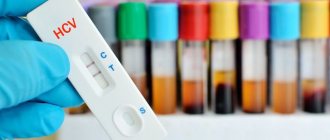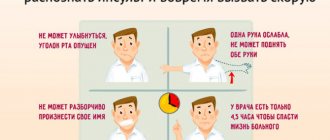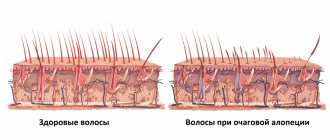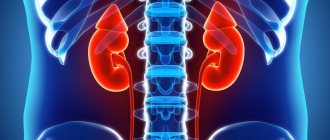A physiotherapist is a specialist who has a medical education and practices physiotherapy. Today, physiotherapy is a field of medicine that studies how various natural and artificially created factors affect the human body.
Most often, the use of physiotherapeutic methods is necessary to prevent the development of certain pathologies. In addition, physiotherapy is part of the medical rehabilitation of patients after severe injuries and serious illnesses.
A physiotherapist studies the therapeutic effects of heat, cold, light, water, ultrasound, laser, electric current, magnetic fields and other factors on the human body.
The best physiotherapists in Moscow work at the rehabilitation clinic of the Yusupov Hospital. Thanks to their vast experience in medical practice, the use of advanced rehabilitation techniques and the use of the latest equipment, patients at the Yusupov Hospital are able to achieve full recovery from serious illnesses and injuries in the shortest possible time.
Who is a physiotherapist
This is a specialist who restores motor activity and treats patients using physiotherapeutic methods. Physical factors include massage, heat and cold, ultrasound, laser, magnetic fields, water, mud, exercise.
Note! Physiotherapy is used only in combination with other treatment methods; it is not effective as a single method. It accelerates the restoration of human health and reduces the duration of drug therapy.
The main responsibilities of a physiotherapist:
- receiving patients, selecting effective physiotherapeutic treatment methods, determining the number of sessions;
- conducting physical procedures for the rehabilitation of patients after severe injuries and serious illnesses;
- training of nursing staff to work on physiotherapeutic devices;
- patient consultation to speed up rehabilitation;
- records management.
Contraindications to physiotherapy
Despite the fact that physiotherapy is gentle, in some cases the physiotherapist still does not recommend its use.
The use of physiotherapeutic methods is contraindicated for the following diseases and conditions:
- in the general serious condition of the patient;
- if the patient has a pacemaker installed;
- in acute febrile conditions;
- with cachexia (severe exhaustion of the body);
- after a heart attack (can be used no earlier than 3 months);
- for blood diseases and a tendency to develop bleeding;
- patients with mental illnesses who cannot control themselves during the procedure;
- in case of intolerance to the therapeutic factor;
- if there is damage to the skin at the site of intended exposure;
- in the presence of neoplasms (both benign and malignant);
- with respiratory, cardiovascular, renal failure.
Even if there are no contraindications, the number of physiotherapy sessions should not exceed two times a day.
A second course of physiotherapy can be carried out two to six months after a preliminary consultation with a physiotherapist.
Features of the profession
The specialist must know everything about the therapeutic effects and the use of various physical factors on the body. Although he does not make diagnoses or diagnose diseases, he can accurately determine whether the patient needs physical therapy or not, how many procedures will be required, and whether there are contraindications.
It is the physiotherapist who develops the physiotherapeutic treatment program, decides which methods to use, identifies areas of influence and the sensitivity of tissues to physical factors. He collaborates with other highly specialized specialists: pulmonologists, infectious disease specialists, orthopedic traumatologists, vertebrologists, gynecologists, and dermatologists.
He masters all modern rehabilitation measures based on external influences on the human body. This:
- laser therapy;
- magnetic therapy;
- ultrasound;
- UHF therapy;
- iontophoresis;
- Ural Federal District;
- infrared irradiation;
- acupuncture;
- electrophoresis;
- thermotherapy;
- diadynamic currents;
- manual therapy;
- massage
- physiotherapy;
- mud and hydrotherapy.
In addition to receiving and treating patients, the doctor coordinates the work of nursing staff in the physiotherapy department.
How are treatment methods selected in a physiotherapy department?
Initially, a consultation with a pediatrician , as well as an examination , tests and testing to determine the nature and cause of the disease. Next, you should visit a specialist who will develop suitable treatment taking into account the degree of the disease, the age of the child, indications and contraindications, if any.
Based on the results of tests and conclusions, a physiotherapist will help create a competent line of procedures , determine how many sessions need to be performed, with what intensity. The specialist also determines, at the end of all procedures, whether a repeat course is needed, and if so, after what period of time.
Pros and cons of the profession
In many countries around the world, a physiotherapist is one of the most sought-after specialists. The popularity of the doctor in Russia is also rapidly increasing.
Advantages of the profession:
- comfortable workplace;
- low degree of responsibility;
- absence of harmful effects, stress.
The profession of any medical worker also has negative sides.
Flaws:
- lack of development prospects;
- low-prestige profession;
- low wages.
At the Academy of Professional Standards, you can undergo professional retraining and master the profession of a physiotherapist as a second specialty, thereby increasing your income level and expanding the scope of your professional interests.
Rules for physiotherapeutic treatment and patient preparation
Physiotherapy is carried out half an hour to an hour after eating. It is not recommended to attend the procedure on an empty stomach.
The specialist informs the patient about the rules of conduct before starting treatment . Need to:
- Remove jewelry and remove metal objects.
- Do not touch the device both before and during the procedure.
- Adults should monitor the behavior of children in the classroom.
- If you feel worse, immediately inform your doctor about the changes.
- Turn off your mobile phone for the duration of the session.
When carrying out laser therapy, UV irradiation, protective glasses should not be removed until the procedure is completed.
Personal qualities for a physiotherapist
Willingness to help people and determination are the main qualities that it is desirable for a physiotherapist to have. In addition, the doctor must be responsible, sociable, and intellectually developed.
Professional qualities are no less important. The work of a physiotherapist is varied and requires certain skills and knowledge. It is necessary not only to know human anatomy and have knowledge of clinical medicine, but also to understand technology.
A physiotherapist who practices exercise therapy and massage must be physically strong.
Who chooses and makes recommendations about the need to prescribe procedures?
- Pediatrician;
- A narrow specialist who diagnosed a certain deviation.
The physiotherapist directly selects the optimal course of treatment, makes appropriate prescriptions and carries out procedures.
Initially, the list of responsibilities of this specialist included exclusively the restoration of musculoskeletal function, but over time the list expanded. Today, a physiotherapist provides consultations, is responsible for carrying out procedures, and prescribes massage for a restorative effect. At the same time, the physiotherapist must be a good psychologist to help the child overcome the fear of doctors and everything new, and help him relax during the procedure.
Where to study
To become a physical therapist, you must graduate from a medical school. It is better to choose the specialty “General Medicine” or “Pediatrics”, since the future doctor must have knowledge in the field of therapeutic medicine.
After receiving your diploma you need to undergo specialization. Residency must be completed in the specialty “Physiotherapist”. The duration of training to become a physiotherapist is 2 years.
During residency, a doctor receives not only theoretical knowledge, but also practical skills. The course of study includes the following disciplines: pedagogy, physiotherapy, quantum medicine, physiotherapeutic methods in cosmetology, reflexology and others.
Rheumatologists, orthopedists-traumatologists, arthrologists and other doctors can optionally take professional retraining courses in the specialty “Physiotherapy” at the Academy of Professional Standards. You can receive additional education both full-time and remotely.
Diseases for which you can consult a physiotherapist
Today, physiotherapeutic practice provides therapy and prevention of a large number of pathologies and diseases:
- sore throat, bronchitis, runny nose, colds, sinusitis;
- inflammatory processes in the joints;
- problems with potency;
- tonsillitis (chronic form);
- rheumatism of the feet or hands; acne on the skin, fungal infection;
- obesity, overweight;
- weakened immunity;
- haemorrhoids;
- headache;
- varicose veins;
- anemia;
- hepatic or renal colic;
- blood pressure problems;
- radiculitis.
The list of diseases that a physiotherapist can treat is quite extensive. In general, this specialist treats almost all organs and systems of the body. It is able to restore the functionality of the eyes, kidneys, joints, skin, heart, head, etc. In addition, an important task of a physiotherapist is to prevent diseases - to prevent their occurrence and progression.
What is included in the initial appointment
Communication. First, the doctor interviews the patient and inquires about complaints and the patient’s condition. He studies the medical history and takes into account the presence of an allergic reaction. Inspection and procedures. Based on the data obtained, the physiotherapist selects the type of treatment procedure, determines the time and strength of the impact, and power. The technical equipment of the Kuntsevo Treatment and Rehabilitation Center meets global safety protocols and allows for all types of physiotherapeutic treatment - magnetic therapy, electrotherapy, light treatment, heat therapy, etc. The latest expert-class equipment allows you to dose the load and act specifically on the lesion. Thus, a rapid therapeutic effect is achieved. Experienced specialists at our center take into account all the characteristics of the patient’s body, the stage and severity of the disease, and the patient’s age.
When to contact
The reason for contacting a physiotherapist should be the following:
- menstruation disorders and gynecological pathologies;
- urological diseases of an acquired or congenital nature;
- postoperative period with difficult rehabilitation;
- injuries of various parts of the musculoskeletal system;
- planning IVF or ICSI;
- partial paralysis of certain parts of the body;
- age after 60 years to prevent degenerative phenomena in cartilage or bone tissue.
Physiotherapist consultations are often prescribed by doctors of other subspecialties to complement the therapeutic regimen. Sometimes physical therapy is necessary during the recovery period after severe or long-term pathologies.
How is the appointment going?
At the appointment, the physiotherapist conducts an oral interview and listens to the patient’s complaints. This is followed by an examination of the affected organ, the area of concern, or the projection of the organ in which a disruption of normal functioning supposedly occurred.
Based on this, the doctor develops an individual diagnostic complex or a list of procedures that can alleviate and improve the patient’s condition.
The cost of an initial consultation with a physiotherapist is about 600-1100 rubles, depending on the level of the clinic and the doctor’s competence.
Neglecting visits to a physiotherapist or postponing a visit to him is fraught with a deterioration in the patient’s condition or ineffectiveness of the treatment. Physiotherapeutic procedures performed by this doctor can shorten the course of treatment, speed up the body’s recovery several times, or prevent the development of complications.
Consultations with a doctor online Taking care of your health is a life priority for everyone.
Communicate with doctors online and receive qualified assistance without leaving your home. Try it Please note! The information on this page is provided for informational purposes only. To prescribe treatment, you must consult a doctor.
WHAT HEALING FACTORS ARE USED IN PHYSIOTHERAPY?
All physiotherapeutic treatment factors can be divided into artificial physical factors and natural factors:
| Artificial healing factors | Natural healing factors |
| Electrotherapeutic | Climatotherapeutic |
| Magnetic therapy | Balneotherapy |
| Phototherapy | Mud therapy |
| Mechanotherapy | |
| Radiotherapy | |
| Thermotherapy | |
| Hydrotherapy |
Each physiotherapeutic factor has both a general effect associated with the transfer of one type of energy to the body, and specific features of the action characteristic only of a certain factor. For example, exposure to ultraviolet radiation on the coda causes moderate aseptic inflammation (erythema reaction) and the formation of vitamin D, and UHF electromagnetic vibrations generate heat in the tissues.
Why patients choose us
Physiotherapists at the Kuntsevo Treatment and Rehabilitation Center are leading specialists and have the highest category. They annually attend trainings and seminars, learn new treatment technologies and successfully apply them in practice. Our physiotherapists have ten years of experience. They select exactly the method of influence that will have the most pronounced effect in each specific case. Doctors take into account any wishes of patients and monitor the dynamics of treatment.
FAQ
- Is it possible to combine several physical therapy methods?
Yes, it is possible, moreover, it is necessary in the treatment of certain diseases, since each method has a certain effect. For example, phonophoresis with hydrocortisone relieves joint swelling, and shock wave therapy reduces pain.
- How can I get to you for a consultation?
To make an appointment with our specialists, just call +74955653514 or leave a request on the website, our consultants will contact you.
PRINCIPLES OF PHYSIOTHERAPY IN PEDIATRICS
The functional characteristics of the child’s body and the dynamics of age-related changes determine a specific response to the action of therapeutic physical factors in physiotherapy. For example, the increased sensitivity of the child’s central nervous system leads to the fact that the result of treatment appears earlier, with small doses of exposure and a shorter duration of treatment. Metabolic processes in children are characterized by greater activity and mobility, therefore biologically active substances are formed faster and in greater quantities than in adults. The body surface area of children relative to body weight is greater than that of adults. Therefore, there is a greater sensitivity of children to the effects of physical factors. Due to the thinness of the skin and the imperfect development of its protective factors, hyperemia (redness) of the skin appears as a reaction to the influence of physical healing factors. Also, the effect of physical factors in children is not limited to the area of direct application, but extends to adjacent anatomical segments.
- The physical factor of influence and its dosage are selected in accordance with the form and stage of the disease, taking into account the age of the child and individual tolerance. Children are usually prescribed one treatment factor per course of treatment. The dosage of the therapeutic factor begins with the minimum parameters. Electrical procedures are prescribed in a pulsed, more gentle mode. Do not affect the heart area, growth zones of bones, internal endocrine organs.
- Children are prescribed only local procedures and refuse general and local procedures that may frighten the child: spark darsonvalization, electrosleep, etc. For young children, they try not to use laser therapy, which has too strong a stimulating effect.
- To prevent the development or progression of the disease, physiotherapy begins to be used as early as possible - at the stage of reversible functional changes.
- Physiotherapy is combined with other treatment methods: drug therapy, surgical treatment, exercise therapy.
- In case of chronic diseases, various influence factors are consistently used, aimed at increasing the protective and adaptive forces of the body.
- When carrying out rehabilitation, sequential stage-by-stage treatment with both physical and natural factors is used.
- Systematic medical monitoring of the tolerability and effectiveness of the treatment is always carried out.
- The effect of physical factors is not limited to the duration of the procedure, since even after its completion functional changes occur in the body (aftereffect phase).
- Delayed therapeutic effect can appear 1.5–3 months after the course of treatment. Therefore, a break between courses of physiotherapy, and therefore rash prescribing of procedures during this period can worsen the patient’s condition. If it is necessary to carry out a second course of treatment in the same place, a different physical factor should be selected.

